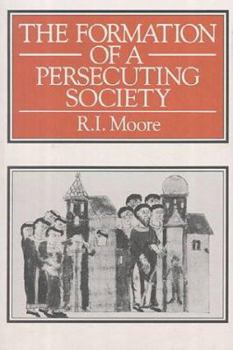The Formation of a Persecuting Society: Power and Deviance in Western Europe
Select Format
Select Condition 
Book Overview
The 10th to the 13th centuries in Europe saw the appearance of popular heresy and the establishment of the inquisition, expropriation and mass murder of Jews, the foundation of leper hospitals in large numbers and the propagation of elaborate measures to segregate lepers from the healthy. These have traditionally been seen as distinct and separate developments, and explained in terms of the problems which their victims presented to medieval society. In this book Robert Moore argues that the coincidences in the treatment of these and other minority groups cannot be explained independently, and that they all are part of a pattern of persecution which appeared for the first time and which consequently became a permanent feature of European society.
Format:Paperback
Language:English
ISBN:0631171452
ISBN13:9780631171454
Release Date:March 2001
Publisher:Wiley-Blackwell
Length:176 Pages
Weight:0.62 lbs.
Dimensions:0.5" x 5.9" x 9.0"
Customer Reviews
1 rating
Exploring the rise of intolerance
Published by Thriftbooks.com User , 24 years ago
This book is an insightful, if brief, examination of the how and why behind the rise of intolerance and persution in the mid to late middle ages. Lots of books are written about one of the specific topics or groups Moore analyzes (lepers, Jews, homosexuals, people considered religious heretics, etc.) but Moore connects these various expressions of persecution to the historical context and the factors encouraging intolerance at particular times of European culture. Unlike many authors, Moore unpacks and questions assumptions about the inevitability of religious persecution and the creation and persecution of so-called heretical religious beliefs and behavior.






